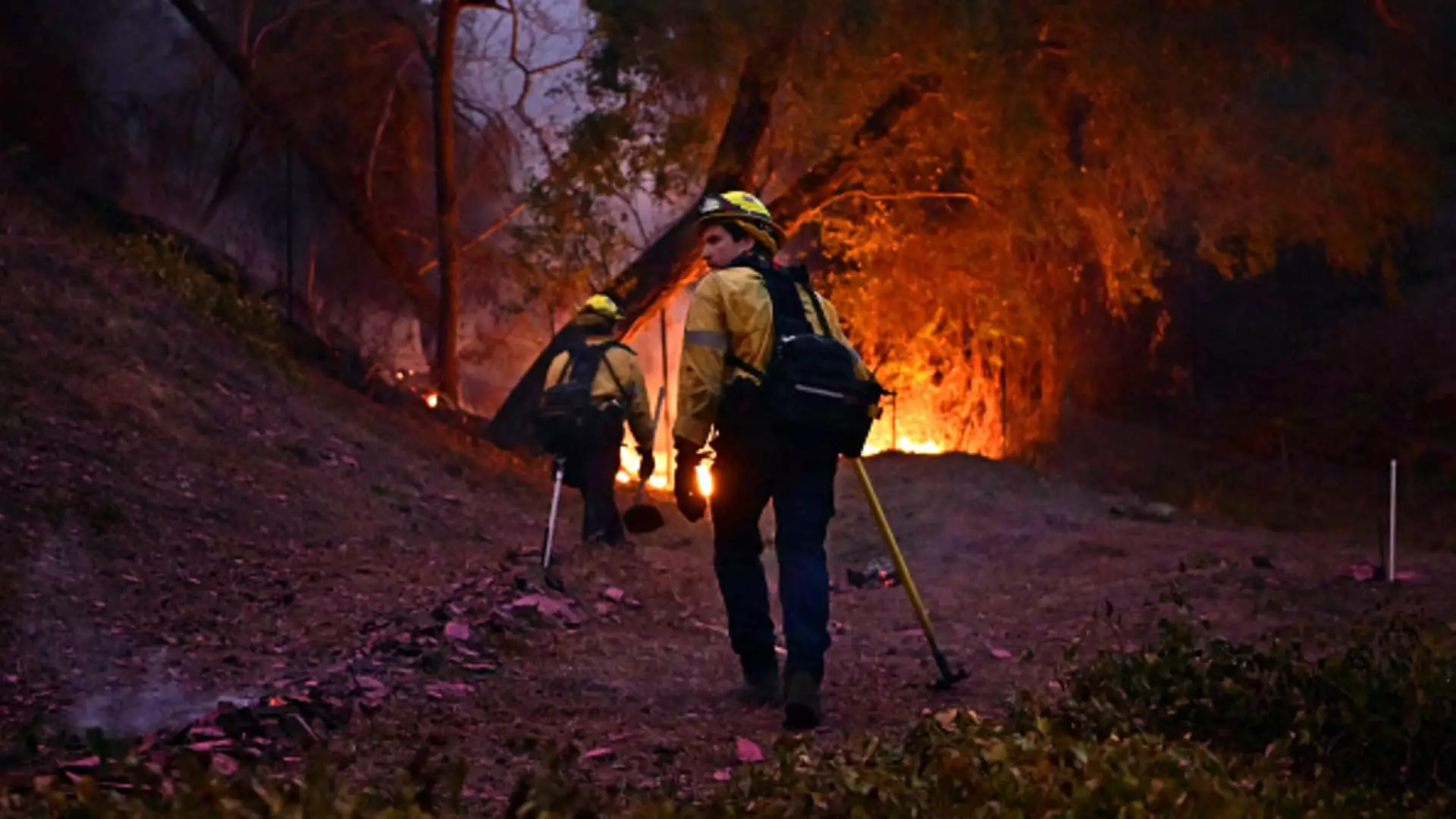The wildfires ravaging Los Angeles County have exceeded initial estimates, confirming a harrowing death toll that now stands at 16 individuals. This tragic figure represents a significant increase from the earlier report of 11 fatalities. The situation remains fluid, with ongoing investigations into the circumstances surrounding each death. The coroner’s office revealed that five victims perished in the Palisades Fire while eleven were claimed by the Eaton Fire. The true extent of the suffering is likely to deepen; as the charred remains of neighborhoods are meticulously combed through by cadaver dogs, harrowing discoveries are imminent. The need for accountability in the wake of such devastating loss amplifies the urgency for thorough investigations.
In response to the fires, authorities have established a missing persons’ reporting center, reflecting the anxieties of countless families forced to flee in chaos. Firefighters are engaged in a desperate race against time, working tirelessly to contain the flames before anticipated strong winds reignite fears of additional destruction. The J. Paul Getty Museum and the University of California, Los Angeles are now directly in the line of fire, with evacuation orders increasing as paranoia grips the local community. In particularly vulnerable neighborhoods, such as Mandeville Canyon, the breathtaking picturesque settings ironically highlight the threats posed by nature gone awry—as residents witness firsthand a nightmare unfolding in spectacular fashion.
Firefighting Efforts: The Battle on the Frontlines
The challenge facing first responders is monumental. With a concerted effort led by CalFire Operations Chief Christian Litz, a primary focus remains directed at the Palisades Fire, situated perilously close to UCLA. The terrain, marked by rugged steep hills blanketed with chaparral, provides both a backdrop of natural beauty and a rigorous battleground for firefighters. Helicopters swoop down, dropping vital gallons of water, while ground crews strive to create barriers against the unforgiving flames. In one recent briefing, Litz emphasized the imminent need for aggressive tactics—a reflection of the urgency instilled by the growing wildfire threat.
The nature of California’s climate has further compounded the disaster’s severity. The National Weather Service has issued warnings regarding the impending return of Santa Ana winds, notoriously known for driving wildfires into uncontrollable infernos. The ongoing drought, now stretching beyond eight months with no significant rain, exacerbates the fire threat, turning vast stretches of land into parched tinderboxes. As the flames threaten to leap over major thoroughfares such as Interstate 405, densely populated urban areas stand precariously on the brink, their safety compromised by the ferocity of nature.
As firefighters battle to reclaim control over the flames, they face the grim reality of devastation across a staggering 56 square miles—an area larger than San Francisco. Estimates indicate that over 12,000 structures have fallen victim to the blazes, causing losses that reflect both personal and economic devastation on an astronomical scale. Preliminary evaluations suggest damages could reach between $135 billion and $150 billion, marking these wildfires as potentially the costliest in American history. Despite the overwhelming challenges, the community has united in a show of solidarity, with volunteer efforts surging as individuals come together to donate supplies for those displaced.
While the community demonstrates resilience, officials remain wary of health risks stemming from the fires. Residents have been cautioned against returning to the ashes of their former homes, where harmful toxins lurk. Lead, arsenic, and asbestos are just a few of the dangers present in the ash, posing substantial risks to health and safety. Firefighters, now grappling with supply shortages, are working hard to ensure that residents can safely return once deemed appropriate, though protective measures will be necessitated.
Leadership in Crisis: Accountability and Reflection
Amidst the chaos, questions of leadership and resource allocation have arisen, with Governor Gavin Newsom ordering an inquiry into failures leading to inadequate water supply during such a catastrophic event. Frustrations surface as Los Angeles Fire Chief Kristin Crowley emphasizes systemic deficiencies, pointing to insufficient funding and resources for effective firefighting. As the city navigates this monumental crisis, the governance of Los Angeles faces an unprecedented test of leadership during a time of overwhelming despair.
The wildfires in Los Angeles County are a stark reminder of nature’s unpredictability and the urgent need for systemic preparedness. The community’s resilience, however, provides hope amidst despair as individuals unite to aid one another, navigating the treacherous waters of loss, heartache, and uncertainty. In the face of adversity, the collective strength of Angelenos shines brightly as they deal with unimaginable challenges head-on.

Leave a Reply